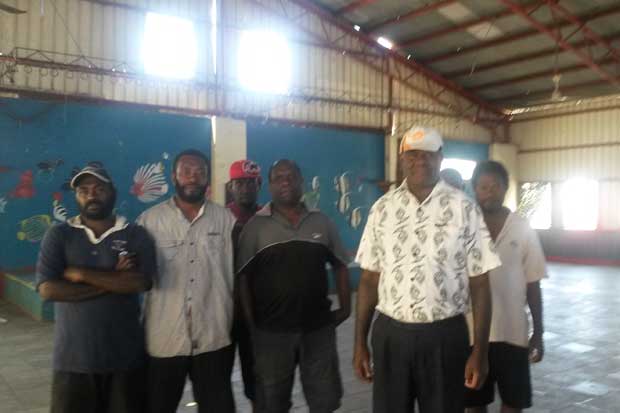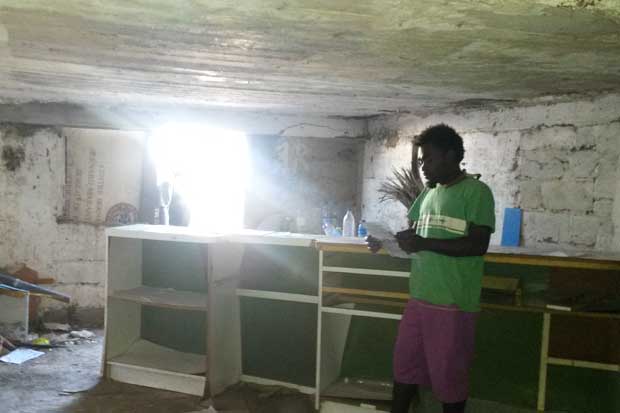The Vanuatu government has started closing down its 48 evacuation centres, where thousands of Ni-Vans gathered for shelter during and after the devastating category 5 Cyclone Pam ripped through the small island nation.
About 5,000 sought refuge in these evacuation centres, some of them coming in from outer islands and other parts of Efate as the Cyclone approached. Many of the evacuation centres were set up in schools.
National Disaster Management Office (NDMO) Communications officer Kerry Manassah told New Matilda that the 5,000 had dwindled down to 3,000 people within the centres, but now the government was trying to “discourage” them from staying longer.
Aid agencies have been told to hand out shelter packs, containing a tarpaulin, materials to put it up, and rations to return to their villages. It’s only been just over a week since the Cyclone hit.
But one aid agency told New Matilda informally that there were still grave concerns many of these people had no where else to go, and were given little warning before they were handed their shelter packs and sent back to their homes.
At the Supreme Court in Port Vila, there were 10 families staying in the municipal hall, usually reserved for official events and ceremonies. They were moved off on Monday, and told to go back to their homes. Some were from the nearby suburb, and others from Teouma, a short 15 minutes drive from the capital in Port Vila.

Sherriff of the Supreme Court Malachi George told New Matilda the hall had housed about 65 people – many of them children – after the cyclone.
They were given tarpaulins yesterday and instructed to leave by the NDMO.
“They have no homes,” he told New Matilda.
And he said the tarpaulins were not enough to shelter people who had evacuated their villages.
“That tarpaulin will only house four people. If you squeeze people in, then maybe, but that tarpaulin as very small. They are concerned but they were given instructions to leave.
“They asked me [if they could]stay here, but they said they were given instructions to leave.”
Mr Manassah told New Matilda it was time for people to move on and start re-building their homes.
“Some of the people need to go back to their places, “Mr Manassah said.
“We are trying to discourage people from staying long in the evacuation centres. If they decide to move, we will give them shelter kits and supply them with food.
“Some of these people are staying in schools. These schools need to clean up. It’s a move to try and discourage people from staying too long and we want to encourage them to go back and build their homes.”
He said the government had already “made allowances” by waiving taxes on items like building materials.
“We believe a lot of our people are resilient. We don’t want to break our spirits. We are continuing to support them and allowing them to live long in an evacuation centre just makes them more dependent. So we want to encourage people to go back and re-build.”
But Mr George says the government has not done enough.
“It’s going very slow,” Mr George says. “All the funds have been donated but the movement has been very slow. I experienced Cyclone Uma. As soon as the cyclone finished, the next day, we had food. But this one is very slow.
“The shelters are important. The water is very important. People… need to go into a proper shelter. Not a tarpaulin.”
Even on Efate, the main island, people are still waiting to receive food aid. While the supermarkets in the capital of Port Vila are stocked, there are concerns that residents who aren’t able to buy from the shops, who are used to surviving off their gardens, will be left without.
Yesterday, at the NDMO office, about 40 people came to complain that they were not receiving food aid.
Mr Manassah said the Prime Minister, Joe Natuman had visited the Shepard Islands yesterday to pay respect to two victims who had died during the storm.

The islands sustained extensive damage to homes, particularly on the island of Mataso.
“These islands urgently need supplies and they are getting it. But they continue to need the assistance from the Vanuatu government and our partners.
“Even the Prime Minister realises it’s so important to support these people. Because of the little islands, the damage was quite extensive.
“…. These people are getting supplies.”
He said with the arrival of the Australian warship HMAS Tobruk, which arrived on Monday, there will be more supplies moving out to people affected, one week on from the cyclone.
“We didn’t have relief supplies that we needed at the start, there was enough stocks of shelter kits – we needed to do the assessments properly,” he said.
“We collect all that information and based on that information we are now doing the distribution.
“The other issue was communication issues, we didn’t have contacts, people on the island.”
The UN Office for the Coordination of Humanitarian Affairs (OCHA) has told media that about 166,000 people would be in need of food aid over the next three months.
Donate To New Matilda
New Matilda is a small, independent media outlet. We survive through reader contributions, and never losing a lawsuit. If you got something from this article, giving something back helps us to continue speaking truth to power. Every little bit counts.



